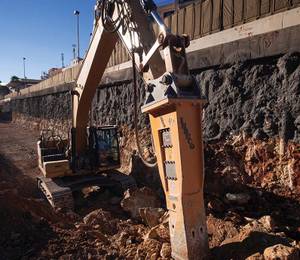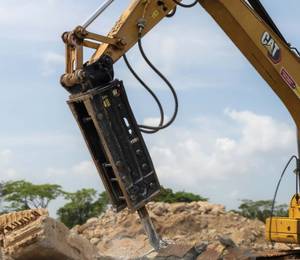The Building and Construction Authority (BCA) projects the total construction demand in Singapore to range between S$32 billion and S$38 billion in nominal terms in 2024.
The public sector is expected to contribute about 55% of the total demand, reaching between S$18 billion and S$21 billion, mainly from public housing and infrastructure projects. Some of the major projects scheduled to be awarded in 2024 include the Housing and Development Board’s (HDB) new build-to-order (BTO) developments, additional Cross Island MRT Line contracts (Phase 2), infrastructure works for the future Changi Airport Terminal 5 (T5) and Tuas Port developments, as well as other major road enhancement and drainage improvement works.
The private sector construction demand is forecast to be between S$14 billion and S$17 billion in 2024. This is anticipated to come primarily from residential developments under the Government Land Sales, expansion of the two Integrated Resorts, redevelopment of commercial premises, and development of mixed-used properties and industrial facilities.
According to BCA, the preliminary construction demand for 2023 reached S$33.8 billion, due to an uptrend in tender prices, expediting of construction awards for several private residential projects and ramping up of HDB’s public housing projects. This exceeded the forecast of S$27 billion to S$32 billion in January 2023.
The public sector construction demand reached S$19.5 billion in 2023, driven by major projects including the Cross Island MRT Line (Phases 1 and 2), institutional building developments and HDB’s BTO developments. The private sector construction demand also improved from S$12.5 billion in 2022 to S$14.3 billion in 2023, due to residential developments under the Government Land Sales and past en-bloc sales sites, integrated developments and major hotel refurbishment projects.
Outlook for 2025-2028
BCA expects a steady improvement in construction demand over the medium term. It is projected to range between S$31 billion and S$38 billion per year from 2025 to 2028.
The public sector will continue to lead the demand and is expected to contribute S$19 billion to S$23 billion per year from 2025 to 2028, with building projects and civil engineering works constituting about 70% and 30% respectively.
Besides public housing developments, the public sector construction demand over the medium term will be supported by a number of major developments, such as MRT projects including the Cross Island Line (Phase 3) and Downtown Line Extension to Sungei Kadut, Alexandra Hospital redevelopment, a new integrated hospital at Bedok, Toa Payoh Integrated Development, Siglap South Integrated Development and redevelopment of various Junior Colleges.
Meanwhile, the private sector construction demand is expected to remain stable in the medium term at between S$12 billion and S$15 billion per year from 2025 to 2028.
Based on the contracts awarded in the past few years and considering the construction demand forecast for 2024, the total nominal construction output (i.e., the value of certified progress payments) in 2024 is projected to increase to between S$34 billion and S$37 billion, from the estimated S$34.8 billion in 2023. This continued uptrend is expected to be supported by a consistent level of construction demand in the last few years and the anticipated increase in 2024 demand.
Improvements to public procurement framework
Standard Consultancy Agreement
BCA has reviewed the Standard Consultancy Agreement (SCA), which is a common contract form used for public sector construction-related consultancy tenders across different disciplines, i.e., architectural, engineering, quantity surveying and project management.
This review is part of a regular effort aimed to ensure that the procurement approach remains fair and progressive. BCA has worked with the relevant trade association and chambers as well as various consultancy firms to identify common pain points and develop a suite of proposed enhancements to tackle these issues. The intended outcomes are as follows:
a). A clearer definition of scope of services for consultants upfront, so that agencies and consultants are aligned in their understanding of the consultants’ roles and responsibilities, and consultants can accurately size the expected effort and price their tender bids accordingly.
b). Maintain a fair and timely remuneration for consultants, which commensurates with the scope of work provided, e.g., by making clear that consultants may request for fee adjustments for additional services required by agencies during a project, or by updating the man-hour rates used to compute the fee adjustments.
c). A more balanced allocation of risk, e.g., providing cost sharing in the event of significant construction delays, where the delays are due to issues beyond the consultant’s control.
BCA plans to implement these enhancements later this year.
Quality Fee Method
BCA has also refined the Quality Fee Method (QFM) framework, which provides government agencies guidelines on the evaluation of construction-related consultancy tenders.
To place greater emphasis on quality, BCA will make the following enhancements to the QFM, among others:
a). Enhance the framework for temporary suspension of consultancy firms that are found to have poor performance, so that it prevents them from taking on additional public sector projects and encourage firms to uphold high standards in their existing projects.
b). Require more projects to be shortlisted for tender via evaluation of quality scores instead of through balloting.
c). Enhance differentiation in quality scores by revising the quality scoring formula and creating wider spread in tenderer’s quality scores.
In addition, BCA will explore how to further encourage sustainable bidding behaviour by piloting a revised fee-score formula. This will disqualify unsustainably low-fee bids and reduce the score for bids that are substantially lower than other tenderers in public sector projects.













